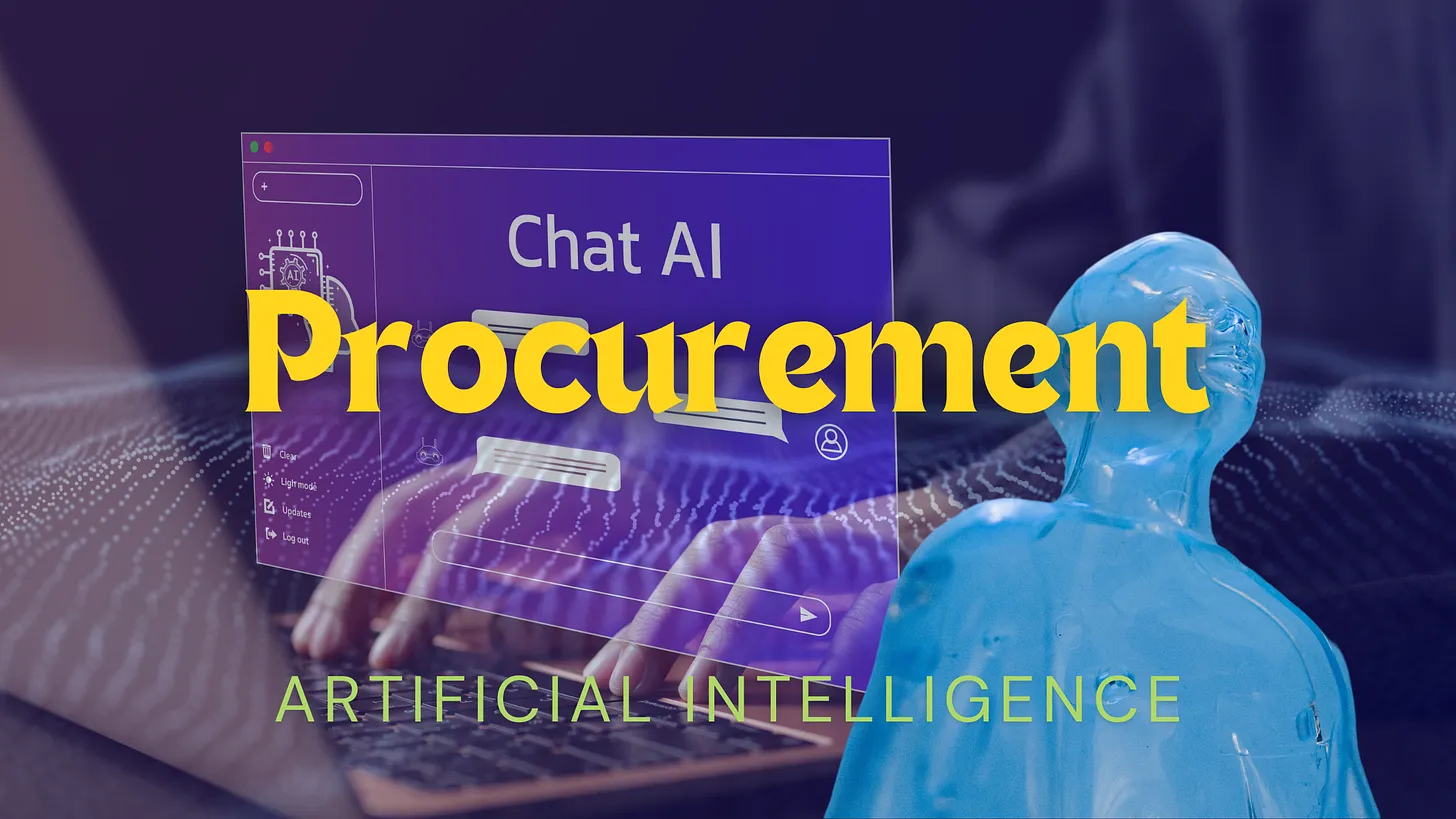Context
Enhancing Performance and Efficiency
Practical AI Applications in Procurement
Sourcing Strategy and Market Research
RFI/RFQ Processes
Negotiation and Contracting
Supplier Relationship Management
Effective Prompt Engineering
The Importance of Well-Structured Prompts
Examples of AI Prompts
-
Market Research: “Analyze the current market trends for [specific product/service] and provide a summary of key competitors and their strategies.”
-
Supplier Evaluation: “Evaluate the performance of [Supplier X] over the past year, focusing on delivery times, quality of goods, and compliance with contract terms.”
-
Contract Drafting: “Draft a contract for the procurement of [specific product/service], including standard clauses, delivery timelines, payment terms, and penalties for non-compliance.”
Common Mistakes to Avoid
Not Anonymizing Sensitive Data
Insufficient Context in Prompts
Not Using Personas
Challenges and Solutions
Proper Prompting
Understanding Biases
Data Privacy
Tools and Integration
Staying Updated with AI Tools
Integrating AI into Workflows
Procurement Policy
Establishing Guidelines for AI Use
Conclusion
By addressing challenges such as proper prompting, understanding biases, and ensuring data privacy, procurement professionals can effectively leverage AI to drive better outcomes and stay ahead in the competitive landscape.
Applications for the internationally acclaimed 8 Day CPSCM™ Certification batch 2022 are now open. The batch will be taught by Omid Ghamami – The World’s Most Sought After Purchasing and Supply Chain Management Author and Trainer who has been named “THE Godfather of Negotiation Planning” by Intel Corporation – teaching YOU LIVE!
The CPSCM™ puts you in practice to handle the top problems that we find going wrong in The Fortune 50 Organizations globally whom we work with to improve their corporate profitability. 200+ companies in the Fortune 500 that have invested in the CPSCM™ program, can’t all be wrong.
Read this twice: You don’t respond to hard bargaining tactics and strategies. *You plan for and prevent them*. A hard bargainer is akin to an onion. Ever try cooking an entire onion whole? It doesn’t work. You have to peel all the layers off to find out what is going on inside with the hard bargainer.
YOU HAVE TO UNDERSTAND WHAT THE SOURCE IS OF THEIR BARGAINING POWER.
From where do they derive their bargaining power? Keep peeling. What exactly is it that allows them to derive negotiating leverage? Keep peeling until you are sure you understand it. Here are some examples:
- Supplier relationships with internal end users
- Perception or belief that you are too married to them as the incumbent and can’t or won’t switch.
- Proprietary material, technology, or intellectual property that they feel you can’t live without.
- Business units have told them they love their product/service and no other company is acceptable.
- Shortage of supply
- Perceived product/service superiority
- Extremely short timelines inside your company
- Difficulties in qualifying another supplier
All of these and more are reasons that you may have a hard bargainer on the other side. But you have to research and diagnose exactly which it is. That is what you are getting paid to do in procurement.
Then, once you are sure you know what the source of their bargaining power is, you devise strategies to decrease their leverage to level the playing field – or even put it in your advantage. As long as you do this ethically and legally, and as long as you are not trying to take advantage of the other party, there is nothing wrong with doing this.
Let me give a real example. A colleague of mine was working with a company that had a huge problem: the supplier was completely aligned with all the business units. Very, very deep knit relationships were in place. It made it nearly impossible to switch suppliers and the supplier knew it and took advantage of it – they were always the hardest bargainers ever at the negotiation table.
So procurement mapped out their internal business units, determining which ones were most contributing to this source of negotiating leverage for the supplier. They then ranked all the business unit representatives, from greatest allegiance to the supplier to least allegiance to the supplier.
They then made a case for putting out the business to bid, something that hadn’t been done in perhaps more than a decade.They started with the business unit lead with least supplier allegiance and easily got their agreement.
Then they successively went to each business unit lead that had the least remaining allegiance, and started to use the Social Proof principle: “all these other business unit leads have already signed up, so we are asking for you to join them. “
By the time they got to the most supplier aligned business unit leads, almost all the business units were already on board. The remaining business units really had no choice but to agree. And so the business went out to bid, shocking and mortifying the incumbent supplier, who didn’t see this coming.
But procurement didn’t stop there. Once they had all the business unit leads on board, they then went to the in the same order, asking them to sign a letter addressed to all suppliers in the bid process, stating that if they contacted other than procurement during the bidding and negotiation process, they would be immediately disqualified.
Once again, they went in the same order and succeeded. All those signatures were obtained from the business unit leads, and the powerful letter was sent to the suppliers in the bid – including the incumbent. All of them complied.
Now, the source of that supplier’s bargaining power was taken away. Once bids were in and procurement started holding At The Table negotiations with the incumbent, it was a totally different personality on the other side. Compromising. Appeasing. Hungry. Unsure. And most of all, totally willing to negotiate.
That is how you deal with hard bargainers. The CPSCM™ Certification Program shows you exactly how to be a Negotiation Godfather.




